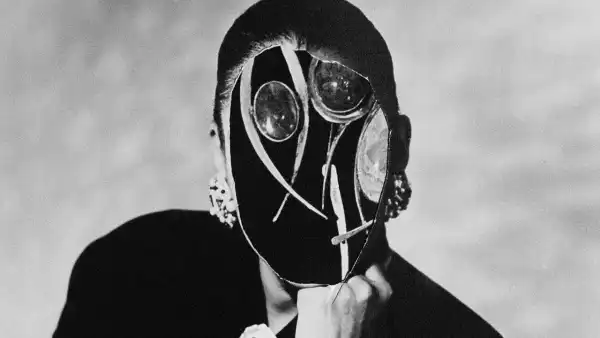
A week ago I saw Wes Anderson’s “Isle of dogs”, or “inu-ha-Shem”. I saw someone heard that name, they forcibly reminded-GA-SIMA, an island of demons, where the peach boy, the hero of Japanese folklore, fight against evil Fang brothers in arms. In first grade, I was thrown in school, in Tokyo, as one of the demons. The essential role of the red face paint and Sharpie-horns and the roar of galloping, and I was so terrible, as the five-foot Japanese Caliban could be. This is all to say that I watched “Isle of dogs” as a Japanese person—as someone who was born in Japan, who spent his childhood and youth, and who looks and speaks and reads and eats like a native.
I saw the film in new York. I arrived early. As I waited, I read the criticism of the film, which is set in the fictional town of Megasaki, and which follows a group of dogs and one or two people, after the mayor bypassing all canines next to garbage Island. Dogs speak English; people are, for the most part, speak Japanese, which is often, but not always translated. Reading the reviews, I found that there were some familiar gripes: the film Orientalized, it is Othered, he was a white-Savior story, it made the Japanese flat and mysterious and incomprehensible, and it was part of a large old Euro-American tradition of white people looting Japanese aesthetics of his art. I put on the headphones and listened to an interview with slate, in which the critic Inkoo Kang, reacted to the video “first reaction: EW. Second reaction: yawn”.
The movie began. Japanese characters began to speak, without subtitles, and suddenly, in the old stone house in the city, surrounded by a sea of Americans inhaling Corgi size tubs of popcorn, I heard voices from the house. They were neither inscrutable nor the apartment. They were Japanese, in various shades of age and talent and fame. I heard Mari Natsuki—better known in the US as the voice of “spirited away”—in a host mother who dresses down excited white girl: “quiet, go to sleep, I don’t care about your newspaper, just go to bed.” I strained to place a TV news anchor voice yet, Yes: he was the singer of a teenage rock band Radwimps, who would have done a mixtape that my first boyfriend gave me in a brown paper bag in front of Shibuya station, over ten years ago.
Even when the voices were not familiar, they were different. Someone—if not Anderson, it is possible that the actor Kunichi Nomura, who was the co-author of the film cared enough to ensure that the voices sounded pitch-perfect as types. Scientist, presenting his insights on the snout of the flu, says with a bored, clipped tone every researcher ponytailed Japanese TV show. In a scene that must have seemed incoherent hum non-Japanese audience, the doctor interrupts another important hushed during operation with an equally serious “Marley!”—unfazed, the performance of the bull’s-eye of “Iryu,” the Japanese version of “ER.” No one in the theatre got, but I couldn’t hold back the laughter.
As the film progressed, I picked up the signals, hidden from the rest of the audience. At one point, the dog jumped on the trolley, which read “garbage: compression and crushing” in a weak white kanji. Propaganda poster—“the mayor Kobayashi for the city Megasaki”—was a playful riff on “for children” supported in principle in the Japanese courts to protect children from negligent parents. (What is used as a campaign slogan was, of course, is ironic, considering that Kobayashi was to return the pet to his charge.) And then there was fun: Atari coming to the question, does the chief dog in the tub the size marked “Hokusai beer.” As the title, a staggering number of characters—kanji, the Japanese people involved in making the film lit the screen brighter for a few seconds and seconds.
As I walked out of the theater, Anderson’s decision not to subtitle in Japanese, I was struck by how carefully considered artistic choice. “Isle of dogs” was deeply interested in humour and fallibility of the translation. It is in the beginning, the title card: “the people in this film speak in their native language (sometimes the translation is a bilingual translator, a foreign exchange student, and an electronic device). Dog barks translated into English”. From the beginning, Anderson points to various suspect that the way translation occurs. Official translator Nelson, announced McDormand, work for the government, but its reliability will be challenged when she begins to type her own comments—“Holy Moses!”;“Boy, what a night!”—while on the job. In one scene, she accidentally replaced the little boy. Session-to talk devices, meanwhile, is shown to be operated by the dark men in white starched shirts. This is the beating heart of the film: there is no such thing as a “true” translation. All of this is interpreted. Translation malleable and involved, always, power supply systems.
This theme continues throughout the film, especially in the character of Tracey Walker, a foreign exchange student who is considered in some reviews, like a white Savior kind. Tracy there is a suspicion that the government covers the bulk of the plot. During a rally she screams “unfair!” and stamps to Kobayashi, demanding that her voice was heard. Kobayashi blinks, then cancels her immigrant visa, leaving her in tears. (In particular, children who are more than just bragging rights are Atari and Japanese hacker from newspaper club Tracy, both of whom ultimately saves the day.) If Tracy white Savior, her role immediately neutered. What is interesting about the scene that she speaks to the crowd in English. As Kobayashi and the crowd understand her words, but the answer in Japanese. It was a revelation: in the world city Megasaki, Japanese can speak and understand English, but speak their native language. They require fluency on their own terms. In the climax of the film rejects the notion of universal legibility, placing the burden of interpretation exclusively for the American audience.
It’s a clever diversion, in which the Japanese Express Agency for independent external review. In fact, to say that the scene depersonalizing of the Japanese is the recognition of the priority of the English-speaking audience. This logic repeats the very language of tyranny, “Isle of dogs” is trying to undermine. Anderson-white, non-Japanese Director, but he was not interested in the dynamics for the translation, and instead made a whistle the dream of imitating Japanese aesthetics, “Isle of dogs” would look and sound completely different. His commitment to showing circadian rhythms are a living, breathing, Japanese people is evident not only in his acting twenty-three Japanese actors, but in their descriptions of how Japanese TV news anchor the transition to a new topic (“this is the next news”) that milk cartons to elementary schools (labeled “extra-thick”), or about how some scientists can rejoice with a clink, “yo—Oh!,” and clap. The film invites a relationship with the audience, who will find these platitudes are familiar with, and allows you to flow those moments, unbeknownst to those who do not.
But that does not mean the primacy of my own experience with the film. Whenever Asian-American dispute occurs, whether it is a whitewash or discharge, usually in the media, ask those at home, what they were thinking—whether they are offended, say, Scarlett Johansson playing a Japanese character. This movement suggests that being Japanese, and the right to be offended, is organically linked with growing on the island. The Japanese, as a rule, people react to the negativity—of course, we will cope with Scarlett!—says just the fact that Japan is a country with no ethnic diversity, no significant critical discourse of race. For Asian-American, meanwhile, is to develop ill-acquainted with seeing in Asia, and Asian characters, distorted, passivized, and sprawled under the white hands.
But we can note that when dealing with the “Isle of dogs” that the tradition of white people “appropriating” Japanese art was a major contribution of the Japanese. The history of Japonisme—the West’s obsession with Japanese aesthetics—cannot be unwoven from the fact that said obsession has served as effective effective distraction, as the Japanese troops invaded Manchuria, Taiwan, and the Korean Peninsula. Kabuki, haiku, woodblock Hiroshige and Hokusai—the very forms that allegedly misappropriated Anderson was, in some respects, cultural ambassadors, which ushered in further Imperial expansion. And Japan also use language as the oppressing force; in Korea, the tsarist government banned the study of Korean and violent Japanese-only policy.
Language is power. “Isle of dogs” knows about it. It shows the seams translation, and demarcates the space that is accessible and funny—just the Japanese. One of the most powerful shots in the film graffiti on the gray cement. Big black Karakul asks: “Douyatte bokura WO korosu tsumori?” How are you going to kill us? For most viewers, this is a sign on the wall. For Japanese, it’s a battle cry.
Sourse: newyorker.com






